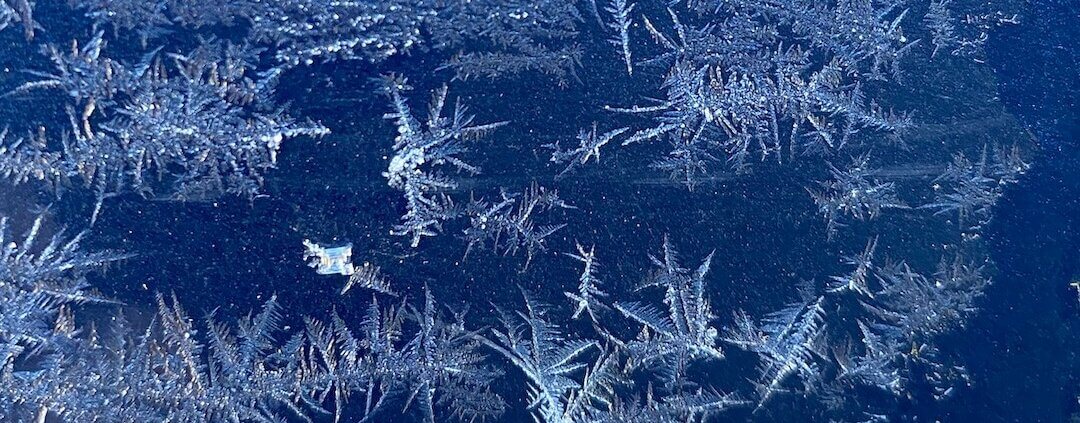Snowflake Bentley: Poet And Scientist
Story and images by Doug Piefer
A freezing rain last night left a glaze of ice on every twig and branch in the woods. Beautiful yet transitory, ice and snow formations disappear quickly either by melting (changing into water) or by
sublimating (vaporizing).
Seeing their complex patterns, I think of photographs by Wilson “Snowflake” Bentley. Born in 1865 on a dairy farm in the middle of Vermont’s snow belt, Wilson A. Bentley’s favorite season was winter, and his childhood fascination with the intricate beauty and variety of snowflakes was lifelong. Bentley’s mother watched her son trying to capture snowflakes and draw them before they disappeared and so she gave him an old microscope when he was fifteen. Eventually his parents were able to buy him a bellows camera attached to a compound microscope. After several years of experimenting, he made his first successful photograph of a snowflake at age 22.
Working on his own through trial and error, he perfected a method of capturing snowflakes on a board covered with black velvet, transferring them immediately to a microscope slide, and then photographing them. His methods were primitive compared with photomicrography of today, but the results
remain unparalleled.
Bentley, who died 92 years ago, was the ultimate “citizen scientist.” He never finished high school and never left his hometown of Jericho, Vermont. But his lifelong obsession with snowflakes culminated in a phenomenal collection of more than 5,000 photomicrographs of snow crystals.
Relentlessly scientific in his methods, his empirical approach eventually led him to propose that no two snow crystals looked the same. To back this up, he published several technical papers in collaboration with a professor at the University of Vermont. These articles, illustrated by his own snowflake photomicrographs, appeared in National Geographic, Popular Science, Nature, and The
Scientific American.
Bentley’s special talents — skillful writing, his depth of scientific understanding, and the beauty of his photographs — caught the public eye. Just before he died of pneumonia in 1931, he published his greatest work, Snow Crystals, in collaboration with William J Humphries of the U. S. Weather Bureau (now the National Weather Service).
Bentley was also a poet at heart who described snowflakes as “tiny miracles of beauty” and “ice flowers.” Although renowned for his snowflake pictures, his photographic studies encompassed natural water formations of all kinds, including ice, clouds, raindrops and fog.
Next time a wintry weather mix keeps you at home, pause to look at the natural world outside. Before taking the scraper to your car windshield, take a moment to study the tree-like ice crystal patterns left on your
window glass.
I have included some of my own snapshots of ice crystals, snow patterns, and the intricate beauty of frozen rain on twigs and branches. If they don’t inspire you, perhaps Bentley’s heartfelt words will :
“The average dairy farmer gets up at dawn because he has to go to work in the cow yard. I get up at dawn, too. But it is because I want to find some leaf, hung with dew; or a spider web which dew has made into the most delicate ropes of pearls … I take my camera with me, get down on my knees in the wet grass, and photograph these exquisite bits of nature. Because I do this, I can show these lovely things to people who never would have seen them without my help. They will get their daily quart of milk, all right. Other farmers will attend to that. But I think I am giving them something which is just
as important.”











